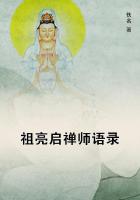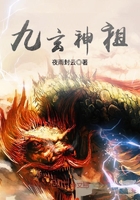Asked if it was a man or a woman, he said it looked more like a beast-- with a too obvious snarl at the prisoner. But the man was plainly shaken with sorrow and sincere anger, and Cowdray quickly excused him from confirming facts that were already fairly clear.
The defending counsel also was again brief in his cross-examination; although (as was his custom) even in being brief, he seemed to take a long time about it. "You used a rather remarkable expression," he said, looking at Cutler sleepily. "What do you mean by saying that it looked more like a beast than a man or a woman?"
Cutler seemed seriously agitated. "Perhaps I oughtn't to have said that," he said; "but when the brute has huge humped shoulders like a chimpanzee, and bristles sticking out of its head like a pig--"
Mr Butler cut short his curious impatience in the middle.
"Never mind whether its hair was like a pig's," he said, "was it like a woman's?"
"A woman's!" cried the soldier. "Great Scott, no!"
"The last witness said it was," commented the counsel, with unscrupulous swiftness. "And did the figure have any of those serpentine and semi-feminine curves to which eloquent allusion has been made? No? No feminine curves? The figure, if I understand you, was rather heavy and square than otherwise?"
"He may have been bending forward," said Cutler, in a hoarse and rather faint voice.
"Or again, he may not," said Mr Butler, and sat down suddenly for the second time.
The third, witness called by Sir Walter Cowdray was the little Catholic clergyman, so little, compared with the others, that his head seemed hardly to come above the box, so that it was like cross-examining a child. But unfortunately Sir Walter had somehow got it into his head (mostly by some ramifications of his family's religion) that Father Brown was on the side of the prisoner, because the prisoner was wicked and foreign and even partly black. Therefore he took Father Brown up sharply whenever that proud pontiff tried to explain anything; and told him to answer yes or no, and tell the plain facts without any jesuitry. When Father Brown began, in his simplicity, to say who he thought the man in the passage was, the barrister told him that he did not want his theories.
"A black shape was seen in the passage. And you say you saw the black shape. Well, what shape was it?"
Father Brown blinked as under rebuke; but he had long known the literal nature of obedience. "The shape," he said, "was short and thick, but had two sharp, black projections curved upwards on each side of the head or top, rather like horns, and--"
"Oh! the devil with horns, no doubt," ejaculated Cowdray, sitting down in triumphant jocularity. "It was the devil come to eat Protestants."
"No," said the priest dispassionately; "I know who it was."
Those in court had been wrought up to an irrational, but real sense of some monstrosity. They had forgotten the figure in the dock and thought only of the figure in the passage.
And the figure in the passage, described by three capable and respectable men who had all seen it, was a shifting nightmare: one called it a woman, and the other a beast, and the other a devil....
The judge was looking at Father Brown with level and piercing eyes.
"You are a most extraordinary witness," he said; "but there is something about you that makes me think you are trying to tell the truth.















